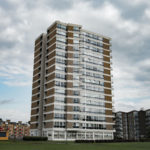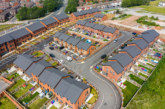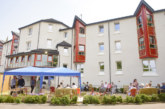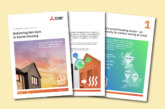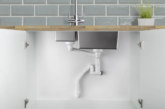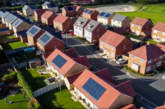Simple changes could make social housing properties more energy-efficient and save tenants money.
A new study has revealed that the average energy efficiency rating for social housing is 67.9 (band D), whilst most new-build homes boast an EPC rating of 81+ (bands A or B). Less energy-efficient homes often result in higher energy bills and greater financial strain from heating costs, particularly with the Energy Price Cap rising by 5% in January. This makes it more important than ever that social homes are as energy-efficient as possible.
The study by ventilation solutions providers Airflow analysed the energy efficiency and ventilation systems in social housing, as well as data from the Social Housing Residents Survey. It revealed that the current ventilation and insulation of social housing dwellings is leaving them less energy-efficient than they could be.
Social homes could be, on average, 16% more energy-efficient than at present, with the right ventilation and insulation measures installed. Whilst the average energy efficiency in social rented properties is 67.9, the average ‘potential energy efficiency’ is 78.9.
The study comes after Awaab’s Law received Royal Assent in the summer, requiring social housing landlords to investigate and fix damp and mould in their properties within strict new time limits.
The study also revealed the top reasons that social housing residents were dissatisfied with their homes were:
- Mould
- Damp
- Condensation
- Insulation
- Ventilation
In fact, tenants were more than 11 times more likely to experience ventilation issues than plumbing issues, and almost five times as likely to experience ventilation issues as heating issues. This makes ventilation and insulation key areas for improvement, not only for resident satisfaction, but for their health and safety.
What can be done to improve energy efficiency in social housing?
Insulation and ventilation are equally important in achieving energy efficiency and work together to keep homes warm and dry. Insulation keeps heat in, but insufficient ventilation can make it difficult to maintain a comfortable temperature, impacting energy consumption by increasing the need for heating.
On the other hand, effective ventilation can make a property more energy-efficient by heating more efficiently. For example, MVHR, one form of mechanical ventilation, captures the warmth of the air from inside the building and uses it to heat the incoming air. This means the air being introduced to the building is preheated, saving the need for additional heating.
There are costs involved with installing measures that improve ventilation and insulation, but the long-term savings can benefit the residents for years to come.
Alan Siggins, Managing Director of Airflow, said: “Ensuring proper ventilation is essential in all homes, particularly social homes where the tenants are renting and unable to make structural changes to their living spaces, as poor ventilation can affect both the well-being of the occupants and the building itself.
“Our recent study has highlighted a gap in the energy performance of these homes and the ventilation available in these properties, despite the known financial and health pitfalls. Inadequate ventilation can lead to a build-up of moisture, which fosters mould growth and creates an environment conducive to various health and respiratory issues.
“With the introduction of Awaab’s law, landlords are now required to prevent growth and address existing issues in their social housing rental properties. Landlords can upgrade ventilation fans, install mechanical ventilation systems and seal gaps that allow drafts, among other improvements. It will depend on the property, so thorough checks should be run.
“There are costs to all of these measures, but the savings to be made in properly ventilated, energy-efficient homes can long outweigh these costs.”


